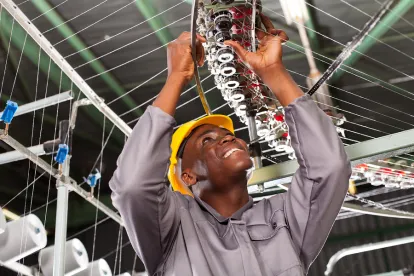As the number of workers in the manufacturing industry aged 55 and older continues to increase, the ability of manufacturing employers to fill open positions becomes more challenging. The next generation of workers interested in manufacturing is far smaller than the generation of Baby Boomers they will replace.
Traditional recruiting and retention methods are falling short of employers’ demand for an increasingly skilled workforce that can program, operate, troubleshoot, repair, and maintain complicated machinery. Outsourcing, automation, and the like are only short-term solutions. Creative thinking and investment in advanced training programs may be manufacturing employers’ best hope for building a reliable talent pipeline. While strategizing on how to keep current workers in the industry longer, it is imperative that employers understand the changing demographics and prepare for the next generation of skilled workers with a workforce development plan that includes the following:
Rebrand and reach out.
Careers in modern manufacturing are high-tech, clean, safe, and profitable, but people unfamiliar to the industry fail to recognize that. In addition, students continue to face stigma when choosing a vocational training over a four-year degree. To change public perception, invite the community (especially middle and high school students) on plant tours, ask the most experienced workers to participate in career days, hold Q&A sessions, sponsor science, technology, engineering, and math (STEM) and technical training scholarships, and celebrate Manufacturing Month (October) and Day (first Friday in October) with tours, presentations, and social media campaigns. The list goes on.
Highlight career opportunities and job security.
New workforce entrants today are more likely than past generations to see their first job as a stepping stone, rather than a career commitment. Manufacturing employers should outline the attractive career paths available, emphasizing training, mentorship, and sponsorship programs and leadership development opportunities.
Create or join apprenticeship programs.
Registered apprenticeship programs are worth a look. They reduce turnover, increase productivity, and lower recruitment costs. According to the U.S. Department of Labor, 91 percent of apprentices that complete an apprenticeship remain employed nine months later. Nevertheless, less than one percent of manufacturing sector employees are registered apprentices, suggesting manufacturers are not capitalizing on this option. Manufacturers also can partner with community colleges and vocational schools to support training programs and bridge the skills gap.
Keep current workers longer through upskilling.
A digitally literate workforce is a must. Offer in-house training and hands-on workshops to help existing employees become more comfortable with evolving technologies and new positions.
Target recruiting efforts.
Target efforts to increase the numbers of candidates from groups traditionally underrepresented in the manufacturing industry.
The current and growing shortage of skilled workers in the manufacturing industry, and the expected retirements, means manufacturers need to prepare.





 />i
/>i

